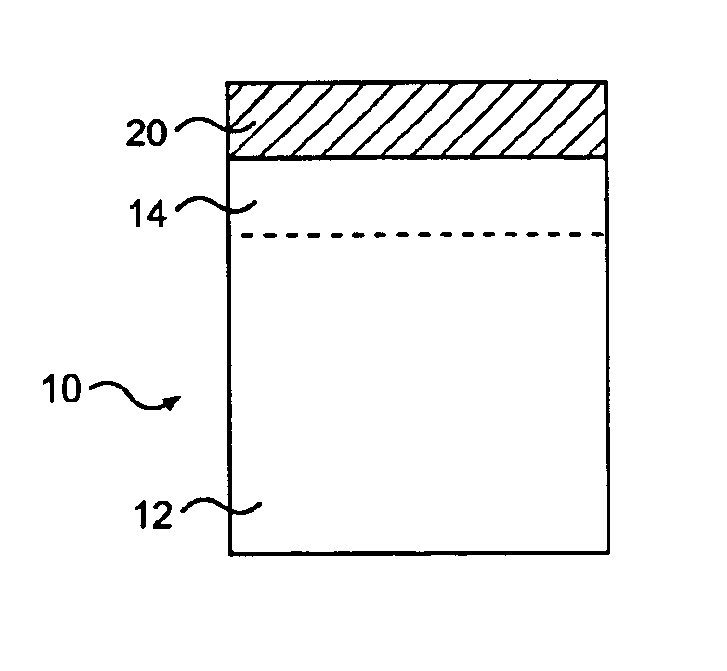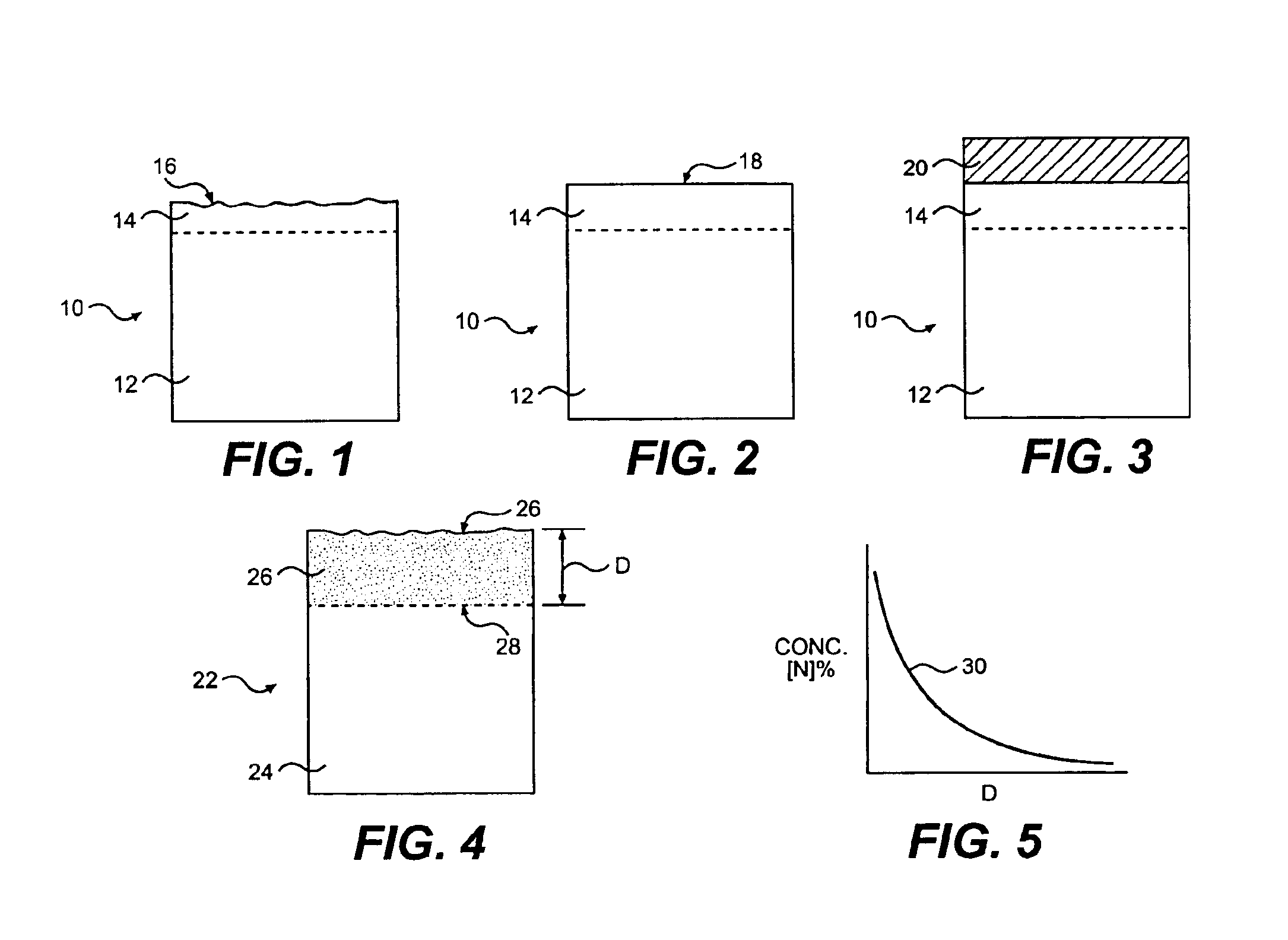Surface process involving isotropic superfinishing
- Summary
- Abstract
- Description
- Claims
- Application Information
AI Technical Summary
Benefits of technology
Problems solved by technology
Method used
Image
Examples
Embodiment Construction
[0015]FIG. 1 shows a schematic view of a metal 10 before surface processing. The metal 10 is an iron-based alloy, however, it is to be understood that aluminum, titanium, nickel, niobium, magnesium or other metals or alloys may benefit from the invention. The metal 10 includes a core 12 and a surface region 14. The surface region 14 has a first surface roughness 16 that is greater than 10 microinches Ra.
[0016]FIG. 2 shows a schematic view of the metal 10 after a surface refining process. The preferred refining process is a known isotropic superfinishing process which typically results in a non-directional surface texture, although other surface refining methods may be used. Isotropic surface finishing involves scouring the surface region 14, with or without chemical accelerants, using relative movement between a solid media and the surface region 14 to produce a second surface roughness 18 on the metal 10. The second surface roughness is less than 10 microinches Ra and preferably is...
PUM
| Property | Measurement | Unit |
|---|---|---|
| Transmission | aaaaa | aaaaa |
| Hardness | aaaaa | aaaaa |
| Surface roughness | aaaaa | aaaaa |
Abstract
Description
Claims
Application Information
 Login to View More
Login to View More - R&D
- Intellectual Property
- Life Sciences
- Materials
- Tech Scout
- Unparalleled Data Quality
- Higher Quality Content
- 60% Fewer Hallucinations
Browse by: Latest US Patents, China's latest patents, Technical Efficacy Thesaurus, Application Domain, Technology Topic, Popular Technical Reports.
© 2025 PatSnap. All rights reserved.Legal|Privacy policy|Modern Slavery Act Transparency Statement|Sitemap|About US| Contact US: help@patsnap.com


